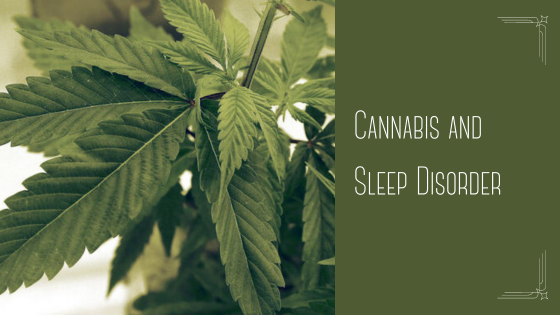
In the quest for restorative sleep, millions worldwide have turned their gaze towards a centuries-old remedy now gaining credibility in scientific circles: cannabis. Recent research delves into how cannabinoids, particularly THC and CBD, influence sleep mechanics and offer potential relief for those suffering from sleep disorders such as insomnia. This evidence-based review explores the intricate relationship between cannabis and sleep, paving the way for a nuanced understanding of its therapeutic potential.
Cannabis and Sleep Architecture
Sleep architecture refers to the structure of the various stages of sleep one cycles through nightly. The primary psychoactive component in cannabis, THC, has been shown to affect sleep architecture by increasing the duration of slow-wave sleep (SWS), the deepest and most restorative phase of sleep. Such changes might explain the reported feeling of refreshment upon waking among cannabis users. However, the impact on rapid eye movement (REM) sleep, the sleep stage associated with dreaming, is somewhat contentious. Studies suggest that THC may decrease REM sleep duration, which, while reducing dream recall—a potential benefit for PTSD sufferers experiencing nightmares—might have unknown long-term effects.
CBD, meanwhile, does not induce psychoactive effects like THC but is praised for its anti-anxiety properties, which can indirectly promote better sleep by reducing stress and anxiety levels that often hinder one’s ability to fall asleep.
Cannabis for Insomnia and Sleep Disorders
Insomnia, the most commonly reported sleep disorder, involves trouble falling asleep, staying asleep, or waking up too early and not being able to return to sleep. The sedative effects of THC have been reported by many users to facilitate quicker sleep onset, making cannabis a popular, albeit controversial, remedy for insomnia.
Sleep apnea, another significant sleep disorder, has emerged as a target for cannabis-related treatments. Initial research into synthetic cannabinoids suggests potential benefits in regulating breathing during sleep, though comprehensive clinical trials are needed to solidify these early findings.

Challenges and Considerations
It’s crucial to acknowledge the complexity of using cannabis for sleep disorders. Long-term cannabis use may lead to tolerance, requiring higher doses to achieve the same effects, and might impact sleep quality over time. Disruption in natural sleep cycles and potential dependency are concerns that necessitate cautious, informed use of cannabis for sleep problems.
Moreover, the legal and regulatory landscape surrounding cannabis varies widely, complicating access and research. The quality and dosing of cannabis products also pose challenges, as the lack of standardization can affect treatment outcomes.
For those considering cannabis as a remedy for sleep disorders, Theblitz420 shop offers a carefully curated selection of cannabis products. Their focus on quality and customer education provides a valuable resource for exploring cannabis-based solutions with confidence.
Conclusion
The intersection of cannabis and sleep science is a burgeoning field offering hope to those plagued by sleep disorders. While the evidence points to potential benefits, especially in the realms of insomnia and possibly sleep apnea, the narrative is complex and steeped in considerations of long-term efficacy and safety. As research evolves, so too will our understanding of how best to harness cannabis’s properties to foster better sleep, turning restless nights into restful recovery with an informed and measured approach.


